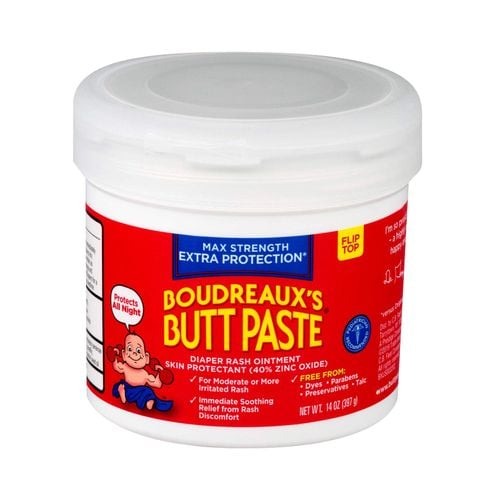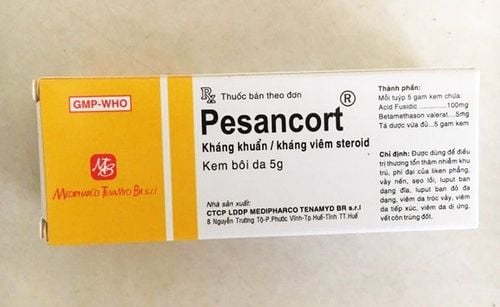This is an automatically translated article.
Skin irritation is a response to external stimuli caused by the skin and can cause cosmetic and health harm. The following article will take a closer look at skin irritation and common factors that trigger allergies.
1. What are allergies and irritations? Irritation of the skin is a mild condition with local manifestations at the exposed skin area and lasts for a short time from a few hours to a few days. Common symptoms of irritation are a burning sensation, redness, swelling, dryness, and flaking. The main cause of irritation is due to unsafe ingredients in cosmetics such as acids, artificial flavors, colorants. After stopping exposure to the causative agent, the symptoms also gradually disappear and the skin gradually recovers.
Allergies are severe and can manifest in all parts of the body and last for weeks to months. This is because the immune system overreacts when exposed to a certain substance causing antibodies to cause an allergic reaction. The initial manifestation is the same as irritation, in other words, an allergy is a reaction at a later stage of irritation. They become more serious when the body appears as hives, itching, blistering and can spread all over the body. Then, systemic symptoms appeared such as dizziness, difficulty in nausea and vomiting. For people with silent skin allergies, the symptoms will not be overwhelming, but after a while will leave serious consequences such as melasma, darkening of the skin, dilated capillaries, and abraded skin. The question is, what is an allergy? Most likely it is a manifestation of chronic allergies.

Giải đáp kích ứng là gì?
2. Common allergy triggers 2.1. Overactive immune system There are many things around us that can cause allergies and this happens when the immune system is overworked to attack things that are normally harmless like pollen, animal dander. objects or food. Allergic reactions can range from mild to severe and even be life-threatening. In the US, about 30% of all adults and 40% of children have allergies.
2.2. Pollen Pollen comes from plants like grasses, trees, and weeds and can cause seasonal allergies. You may sneeze, have a runny nose, stuffy nose, and watery eyes. Treat these conditions with over-the-counter or prescription medicinal products. To limit this situation, you should stay indoors on windy days when pollen counts are high and keep windows closed.
2.3. Pets Many pet lovers may not be aware that proteins in their saliva or skin oil glands can cause allergic reactions. Therefore, create a separate place for them and make sure that your bedroom is free of pets. Additionally, bathing them regularly and installing a HEPA filter can also help.
2.4. Ticks These tiny bugs usually live in beds, mattresses, upholstery, carpets and curtains. They survive on eating dead skin cells from people and pets, as well as pollen, bacteria and fungi, and thrive in high humidity. To minimize problems, use hypoallergenic pillows, upholstery, pillowcases, and box springs, and wash sheets weekly in hot water. Keep the house free of dust-retaining items such as stuffed animals, curtains, and rugs.

Côn trùng đốt có thể kích thích dị ứng
2.5. Insect stings Insect bites can cause swelling and redness that can last a week or more. Accompanied by abdominal pain, fatigue and low-grade fever. In some cases of hypersensitivity, insect bites cause an anaphylactic reaction that can be life-threatening. When symptoms of anaphylaxis appear, you will need to take epinephrine medicine right away.
2.6. Mold Mold needs moisture to grow so it can be found in damp places like basements or bathrooms, as well as in grass. Inhaling mold spores can cause an allergic reaction, so avoid activities that can trigger symptoms, such as mowing or sweeping.
2.7. Food Certain foods such as milk, shellfish, eggs and nuts are among the most common food allergens. Other groups include wheat, soybeans, and fish. Symptoms that can occur within minutes of ingestion include difficulty breathing and hives, vomiting, diarrhea, and swelling around the mouth. When symptoms begin to appear, it is necessary to contact medical facilities immediately. So call 911 immediately and use an epinephrine injector if prescribed.
2.8. Rubber Rubber is a component of many different types of items such as gloves, condoms and disposable medical devices. Reactions can range from itching and redness of the skin to anaphylaxis with difficulty breathing. Symptoms include erythema, hives, eye irritation, runny or itchy nose, sneezing, and wheezing. If you have allergies, wear a medical alert bracelet and carry an epinephrine kit if you are prescribed it.
2.9. Antibiotics Two typical drugs like penicillin, aspirin, and others can cause a rash, itchy eyes, stuffy nose, and swelling in your face, mouth, and throat. If you have a history of drug allergy, it is best not to take it and to discuss it with your doctor to plan another treatment option.
Above are common allergy triggers. Therefore, when there is a history of allergies, it is important to try to avoid known triggers and carefully document the cause so that when symptoms occur, it will help the doctor determine the cause and make an accurate diagnosis.
Please dial HOTLINE for more information or register for an appointment HERE. Download MyVinmec app to make appointments faster and to manage your bookings easily.
Reference source: webmd













